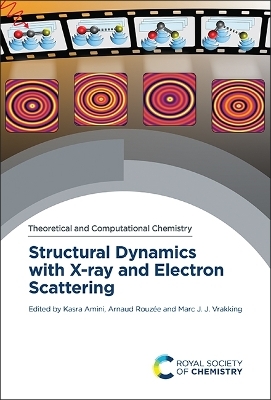
Structural Dynamics with X-ray and Electron Scattering
Royal Society of Chemistry (Verlag)
978-1-83767-114-4 (ISBN)
Since the early 20th century, X-ray and electron scattering has provided a powerful means by which the location of atoms can be identified in gas-phase molecules and condensed matter with sub-atomic spatial resolution. Scattering techniques can also provide valuable observables of the fundamental properties of electrons in matter such as an electron’s spin and its energy. In recent years, significant technological developments in both X-ray and electron scattering have paved the way to time-resolved analogues capable of capturing real-time snapshots of transient structures undergoing a photochemical reaction.
Structural Dynamics with X-ray and Electron Scattering is a two-part book that firstly introduces the fundamental background to scattering theory and photochemical phenomena of interest. The second part discusses the latest advances and research results from the application of ultrafast scattering techniques to imaging the structure and dynamics of gas-phase molecules and condensed matter. This book aims to provide a unifying platform for X-ray and electron scattering.
Kasra Amini: Kasra completed his PhD at University of Oxford in 2017 on laser-induced Coulomb explosion imaging and postdoctoral positions on laser-induced electron diffraction at The Institute of Photonic Sciences (ICFO, Barcelona). Since 2021, Kasra is the junior group leader of the ultrafast electron diffraction group (UED) at Max-Born Institute (MBI, Berlin), focussing on high repetition rate UED imaging of transient gas-phase and condensed matter structures with high temporal resolution. Arnaud Rouzée: Arnaud has expertise in ultrafast laser science, atomic and molecular spectroscopy, nonlinear optics, strong field physics and X-ray science. Dr. Rouzée is an expert on the fundamentals and applications of strong-field physics in ultrafast molecular science, including the development of novel methods to image coherent electronic and nuclear dynamics. Marc J. J. Vrakking: After completing his PhD at the University of California at Berkeley in 1992 and postdoc positions at the National Research Council (Ottawa) and the Vrije Universiteit Amsterdam, Prof. Marc Vrakking led a scientific group at the FOM Institute for Atomic and Molecular Physics (AMOLF) in Amsterdam from 1997 to 2011, focusing on the use of ultrashort (femtosecond and attosecond) extreme-ultra-violet (XUV) and X-ray laser pulses in studies of time-resolved atomic and molecular dynamics. In March 2010, he was appointed as director at the Max-Born Institute (MBI) in Berlin, and as a professor of physics at the Freie Universität Berlin. At MBI, Marc Vrakking is the head of Division A (“Attosecond Science”) and leads a team of researchers that are both further developing and applying techniques to study electron dynamics on attosecond timescales as well as nuclear dynamics on femtosecond timescales.
Ultrafast Molecular Spectroscopy in the Gas Phase;Ultrafast Spectroscopy in Solid Matter;Theory of Time-dependent Scattering;Femtosecond Diffraction with Laser-driven Hard X-ray Sources: Nuclear Motions and Transient Charge Densities;Imaging Clusters and Their Dynamics with Single-shot Coherent Diffraction;Ultrafast Nanoscale Imaging with High Harmonic Sources;X-ray Resonant Scattering and Holography with Application to Magnetization Dynamics;Free Electron Lasers for X-ray Scattering and Diffraction;Time-resolved X-ray Scattering of Excited State Structure and Dynamics;Photoelectron Diffraction;The Many Facets of Ultrafast Electron Diffraction and Microscopy: Development and Applications;Imaging Ultrafast Structural Dynamics with Megaelectronvolt Ultrafast Electron Diffraction;Laser Induced Electron Diffraction;Electron Imaging in Action: Attosecond Electron Diffraction and Microscopy;RF Cavity-based Ultrafast Transmission Electron Microscopy;Next-generation Electron Sources
| Erscheinungsdatum | 19.12.2023 |
|---|---|
| Reihe/Serie | Theoretical and Computational Chemistry Series ; Volume 25 |
| Verlagsort | Cambridge |
| Sprache | englisch |
| Maße | 156 x 234 mm |
| Gewicht | 3265 g |
| Themenwelt | Naturwissenschaften ► Chemie ► Analytische Chemie |
| Naturwissenschaften ► Chemie ► Physikalische Chemie | |
| Naturwissenschaften ► Physik / Astronomie ► Atom- / Kern- / Molekularphysik | |
| ISBN-10 | 1-83767-114-1 / 1837671141 |
| ISBN-13 | 978-1-83767-114-4 / 9781837671144 |
| Zustand | Neuware |
| Informationen gemäß Produktsicherheitsverordnung (GPSR) | |
| Haben Sie eine Frage zum Produkt? |
aus dem Bereich


